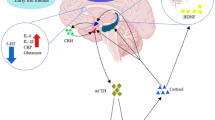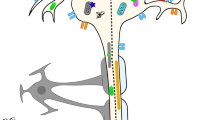Abstract
A great deal of attention has been paid to neuroprotective therapies for cerebral ischemic stroke. Our two recent clinical trials showed that ginsenoside Rd (Rd), a kind of monomeric compound extracted from Chinese herbs, Panax ginseng and Panax notoginseng, was safe and efficacious for the treatment of ischemic stroke. In this study, we conducted a pooled analysis of the data from 199 patients with acute ischemic stroke in the first trial and 390 in the second to reanalyze the efficacy and safety of Rd. Moreover, animal stroke models were carried out to explore the possible molecular mechanisms underlying Rd neuroprotection. The pooled analysis showed that compared with placebo group, Rd could improve patients’ disability as assessed by modified Rankin Scale (mRS) score on day 90 post-stroke and reduce neurologic deficits on day 15 or day 90 post-stroke as assessed by NIH Stroke Scale (NIHSS) and Barthel Index (BI) scores. For neuroprotective mechanisms, administration of Rd 4 h after stroke could inhibit ischemia-induced microglial activation, decrease the expression levels of various proinflammatory cytokines, and suppress nuclear factor of kappa light polypeptide gene enhancer in B cells inhibitor, alpha (IκBα) phosphorylation and nuclear factor kappa-light-chain-enhancer of activated B cells (NF-κB) nuclear translocation. An in vitro proteasome activity assay revealed a significant inhibitory effect of Rd on proteasome activity in microglia. Interestingly, Rd was showed to have less side effects than glucocorticoid. Therefore, our study demonstrated that Rd could safely improve the outcome of patients with ischemic stroke, and this therapeutic effect may result from its capability of suppressing microglial proteasome activity and sequential inflammation.






Similar content being viewed by others
References
Feigin VL, Lawes CM, Bennett DA, Barker-Collo SL, Parag V (2009) Worldwide stroke incidence and early case fatality reported in 56 population-based studies: a systematic review. Lancet Neurol 8(4):355–369. doi:10.1016/S1474-4422(09)70025-0
Norrving B, Kissela B (2013) The global burden of stroke and need for a continuum of care. Neurology 80(3 Suppl 2):S5–S12. doi:10.1212/WNL.0b013e3182762397
Sahota P, Savitz SI (2011) Investigational therapies for ischemic stroke: neuroprotection and neurorecovery. Neurotherapeutics 8(3):434–451. doi:10.1007/s13311-011-0040-6
Donnan GA, Davis SM, Parsons MW, Ma H, Dewey HM, Howells DW (2011) How to make better use of thrombolytic therapy in acute ischemic stroke. Nat Rev Neurol 7(7):400–409. doi:10.1038/nrneurol.2011.89
Wardlaw JM, Murray V, Berge E, del Zoppo G, Sandercock P, Lindley RL, Cohen G (2012) Recombinant tissue plasminogen activator for acute ischaemic stroke: an updated systematic review and meta-analysis. Lancet 379(9834):2364–2372. doi:10.1016/S0140-6736(12)60738-7
Stroke Unit Trialists C (2007) Organised inpatient (stroke unit) care for stroke. Cochrane Database Syst Rev 4, CD000197. doi:10.1002/14651858.CD000197.pub2
Sutherland BA, Minnerup J, Balami JS, Arba F, Buchan AM, Kleinschnitz C (2012) Neuroprotection for ischaemic stroke: translation from the bench to the bedside. Int J Stroke 7(5):407–418. doi:10.1111/j.1747-4949.2012.00770.x
Wahlgren NG, Ahmed N (2004) Neuroprotection in cerebral ischaemia: facts and fancies—the need for new approaches. Cerebrovasc Dis 17(Suppl 1):153–166. doi:10.1159/000074808
Edaravone Acute Infarction Study G (2003) Effect of a novel free radical scavenger, edaravone (MCI-186), on acute brain infarction. Randomized, placebo-controlled, double-blind study at multicenters. Cerebrovasc Dis 15(3):222–229
Hill MD, Martin RH, Mikulis D, Wong JH, Silver FL, Terbrugge KG, Milot G, Clark WM et al (2012) Safety and efficacy of NA-1 in patients with iatrogenic stroke after endovascular aneurysm repair (ENACT): a phase 2, randomised, double-blind, placebo-controlled trial. Lancet Neurol 11(11):942–950. doi:10.1016/S1474-4422(12)70225-9
Liu X, Wang L, Wen A, Yang J, Yan Y, Song Y, Ren H, Wu Y et al (2012) Ginsenoside-Rd improves outcome of acute ischaemic stroke—a randomized, double-blind, placebo-controlled, multicenter trial. Eur J Neurol Offic J Eur Fed Neurol Soc 19(6):855–863. doi:10.1111/j.1468-1331.2011.03634.x
Liu X, Xia J, Wang L, Song Y, Yang J, Yan Y, Ren H, Zhao G (2009) Efficacy and safety of ginsenoside-Rd for acute ischaemic stroke: a randomized, double-blind, placebo-controlled, phase II multicenter trial. Eur J Neurol Offic J Eur Fed Neurol Soc 16(5):569–575. doi:10.1111/j.1468-1331.2009.02534.x
Li L, Liu J, Yan X, Qin K, Shi M, Lin T, Zhu Y, Kang T et al (2011) Protective effects of ginsenoside Rd against okadaic acid-induced neurotoxicity in vivo and in vitro. J Ethnopharmacol 138(1):135–141. doi:10.1016/j.jep.2011.08.068
Ye R, Han J, Kong X, Zhao L, Cao R, Rao Z, Zhao G (2008) Protective effects of ginsenoside Rd on PC12 cells against hydrogen peroxide. Biol Pharm Bull 31(10):1923–1927
Ye R, Kong X, Yang Q, Zhang Y, Han J, Li P, Xiong L, Zhao G (2011) Ginsenoside rd in experimental stroke: superior neuroprotective efficacy with a wide therapeutic window. Neurotherapeutics 8(3):515–525. doi:10.1007/s13311-011-0051-3
Ye R, Kong X, Yang Q, Zhang Y, Han J, Zhao G (2011) Ginsenoside Rd attenuates redox imbalance and improves stroke outcome after focal cerebral ischemia in aged mice. Neuropharmacology 61(4):815–824. doi:10.1016/j.neuropharm.2011.05.029
Ye R, Li N, Han J, Kong X, Cao R, Rao Z, Zhao G (2009) Neuroprotective effects of ginsenoside Rd against oxygen-glucose deprivation in cultured hippocampal neurons. Neurosci Res 64(3):306–310. doi:10.1016/j.neures.2009.03.016
Ye R, Yang Q, Kong X, Han J, Zhang X, Zhang Y, Li P, Liu J et al (2011) Ginsenoside Rd attenuates early oxidative damage and sequential inflammatory response after transient focal ischemia in rats. Neurochem Int 58(3):391–398. doi:10.1016/j.neuint.2010.12.015
Ye R, Zhang X, Kong X, Han J, Yang Q, Zhang Y, Chen Y, Li P et al (2011) Ginsenoside Rd attenuates mitochondrial dysfunction and sequential apoptosis after transient focal ischemia. Neuroscience 178:169–180. doi:10.1016/j.neuroscience.2011.01.007
Zhang C, Du F, Shi M, Ye R, Cheng H, Han J, Ma L, Cao R et al (2012) Ginsenoside Rd protects neurons against glutamate-induced excitotoxicity by inhibiting ca(2+) influx. Cell Mol Neurobiol 32(1):121–128. doi:10.1007/s10571-011-9742-x
Chamorro A, Hallenbeck J (2006) The harms and benefits of inflammatory and immune responses in vascular disease. Stroke 37(2):291–293. doi:10.1161/01.STR.0000200561.69611.f8
Samson Y, Lapergue B, Hosseini H (2005) Inflammation and ischaemic stroke: current status and future perspectives. Rev Neurol (Paris) 161(12 Pt 1):1177–1182
Trendelenburg G (2008) Acute neurodegeneration and the inflammasome: central processor for danger signals and the inflammatory response? J Cereb Blood Flow Metab 28(5):867–881. doi:10.1038/sj.jcbfm.9600609
Iadecola C, Alexander M (2001) Cerebral ischemia and inflammation. Curr Opin Neurol 14(1):89–94
Zhang YX, Wang L, Xiao EL, Li SJ, Chen JJ, Gao B, Min GN, Wang ZP et al (2013) Ginsenoside-Rd exhibits anti-inflammatory activities through elevation of antioxidant enzyme activities and inhibition of JNK and ERK activation in vivo. Int Immunopharmacol 17(4):1094–1100
Zhang Y, Zhou L, Zhang X, Bai J, Shi M, Zhao G (2012) Ginsenoside-Rd attenuates TRPM7 and ASIC1a but promotes ASIC2a expression in rats after focal cerebral ischemia. Neurological Sci Offic J Ital Neurol Soc Ital Soc Clin Neurophysiol 33(5):1125–1131. doi:10.1007/s10072-011-0916-6
Yenari MA, Giffard RG (2001) Ischemic vulnerability of primary murine microglial cultures. Neurosci Lett 298(1):5–8
Yenari MA, Kauppinen TM, Swanson RA (2010) Microglial activation in stroke: therapeutic targets. Neurotherapeutics 7(4):378–391. doi:10.1016/j.nurt.2010.07.005
Dixit V, Mak TW (2002) NF-kappaB signaling. Many roads lead to madrid. Cell 111(5):615–619
Chen J, Chen ZJ (2013) Regulation of NF-kappaB by ubiquitination. Curr Opin Immunol 25(1):4–12. doi:10.1016/j.coi.2012.12.005
Hayden MS, Ghosh S (2008) Shared principles in NF-kappaB signaling. Cell 132(3):344–362. doi:10.1016/j.cell.2008.01.020
Quinn TJ, Dawson J, Walters MR, Lees KR (2009) Reliability of the modified Rankin Scale: a systematic review. Stroke 40(10):3393–3395. doi:10.1161/STROKEAHA.109.557256
Lees KR, Bath PM, Schellinger PD, Kerr DM, Fulton R, Hacke W, Matchar D, Sehra R et al (2012) Contemporary outcome measures in acute stroke research: choice of primary outcome measure. Stroke 43(4):1163–1170. doi:10.1161/STROKEAHA.111.641423
Saver JL (2011) Optimal end points for acute stroke therapy trials: best ways to measure treatment effects of drugs and devices. Stroke 42(8):2356–2362. doi:10.1161/STROKEAHA.111.619122
Chen YF (2012) Traditional Chinese herbal medicine and cerebral ischemia. Front Biosci (Elite Ed) 4:809–817
Kaste M (2012) Is the door open again for neuroprotection trials in stroke? Lancet Neurol 11(11):930–931. doi:10.1016/S1474-4422(12)70229-6
Kaste M (2012) Is there a future for neuroprotective agents in acute ischaemic stroke? Eur J Neurol Offic J Eur Fed Neurol Soc 19(6):797–798. doi:10.1111/j.1468-1331.2011.03633.x
Muir KW, Tyrrell P, Sattar N, Warburton E (2007) Inflammation and ischaemic stroke. Curr Opin Neurol 20(3):334–342. doi:10.1097/WCO.0b013e32813ba151
Wang L, Zhang Y, Wang Z, Li S, Min G, Wang L, Chen J, Cheng J et al (2012) Inhibitory effect of ginsenoside-Rd on carrageenan-induced inflammation in rats. Can J Physiol Pharmacol 90(2):229–236. doi:10.1139/y11-127
Yang XL, Guo TK, Wang YH, Huang YH, Liu X, Wang XX, Li W, Zhao X et al (2012) Ginsenoside Rd attenuates the inflammatory response via modulating p38 and JNK signaling pathways in rats with TNBS-induced relapsing colitis. Int Immunopharmacol 12(2):408–414. doi:10.1016/j.intimp.2011.12.014
Acknowledgments
This work was supported by the National Natural Science Foundation of China (No. 31170801 to S.M., No. 81372115 to Z.G.Y., No. 81171236 to L.X.D., and No. 81371365 to Z.G.).
Conflict of Interest
The authors declare no conflict of interests.
Author information
Authors and Affiliations
Corresponding authors
Additional information
Guangyun Zhang, Feng Xia, and Yunxia Zhang contributed equally to this work.
Electronic supplementary material
Below is the link to the electronic supplementary material.
ESM 1
(DOCX 18 kb)
Supplementary Figure 1
Schematic diagrams for experimental procedures of MCAO in rats (A) and cultured microglia subjected to OGD or LPS injury (B). (GIF 21 kb)
Supplementary Figure 2
Disposition of patients in the pooled study. (GIF 26 kb)
Supplementary Figure 3
Rd inhibits p65 nuclear translocation. Immunofluorescence staining of NF-κB p65 and Hoechst 33342 (Ho) in rat cortical penumbra regions in Sham (A-C), MCAO (D-F), and MCAO+Rd (G-I) groups. Arrows and arrowheads show cytosolic and nuclear location of p65 immunoreactivities, respectively. Scale bar: 10 μm. (GIF 412 kb)
Supplemental Table 1
Baseline characteristics of patients with ischemic stroke included in the full analysis set (FAS) (DOCX 14 kb)
Rights and permissions
About this article
Cite this article
Zhang, G., Xia, F., Zhang, Y. et al. Ginsenoside Rd Is Efficacious Against Acute Ischemic Stroke by Suppressing Microglial Proteasome-Mediated Inflammation. Mol Neurobiol 53, 2529–2540 (2016). https://doi.org/10.1007/s12035-015-9261-8
Received:
Accepted:
Published:
Issue Date:
DOI: https://doi.org/10.1007/s12035-015-9261-8




